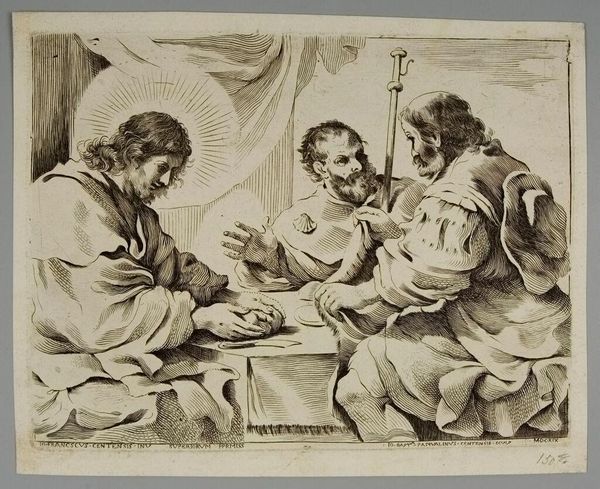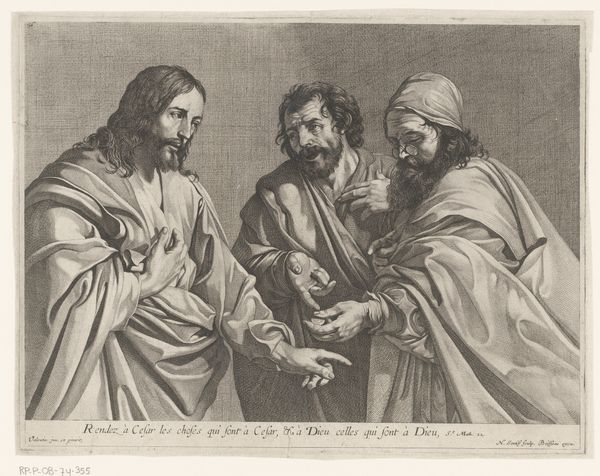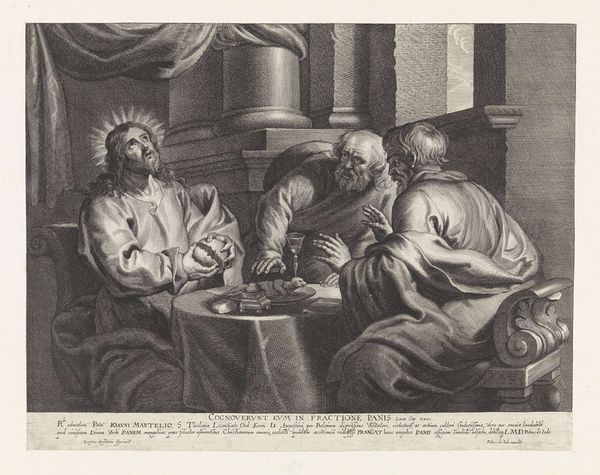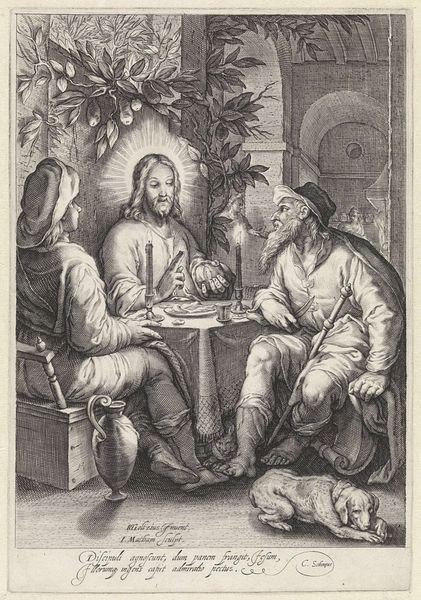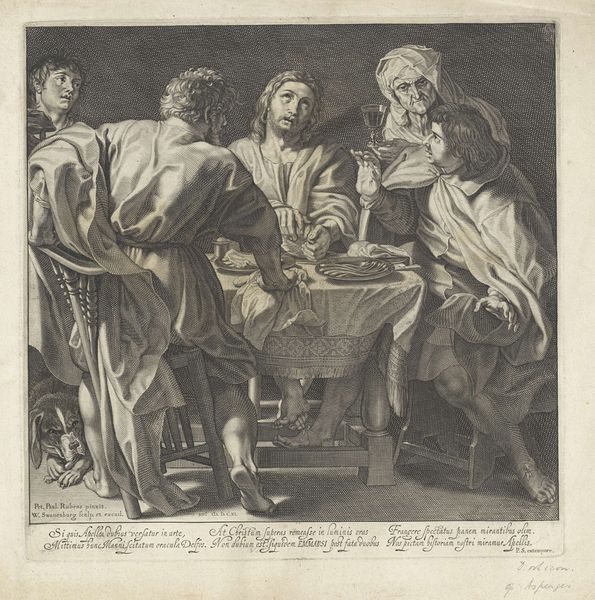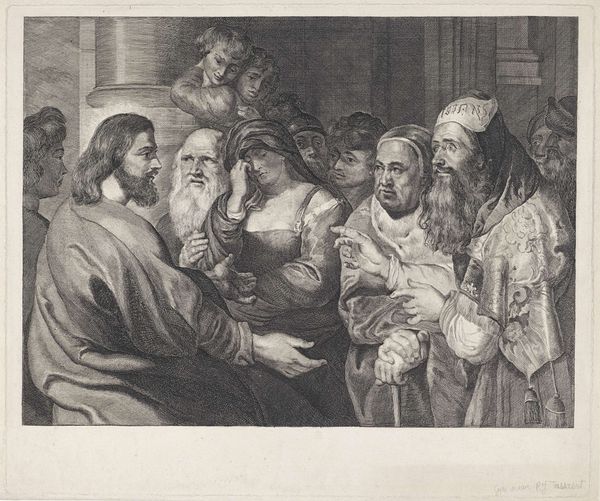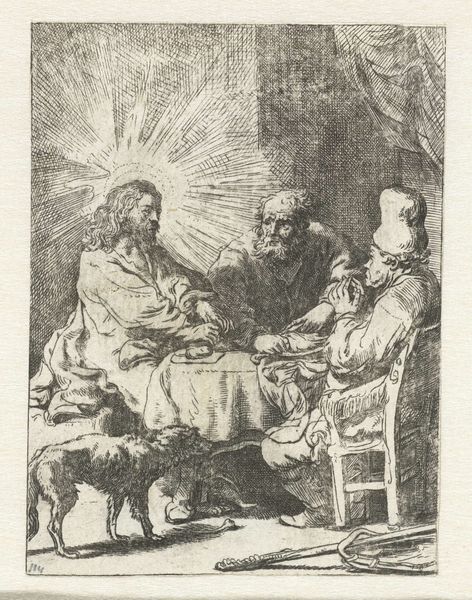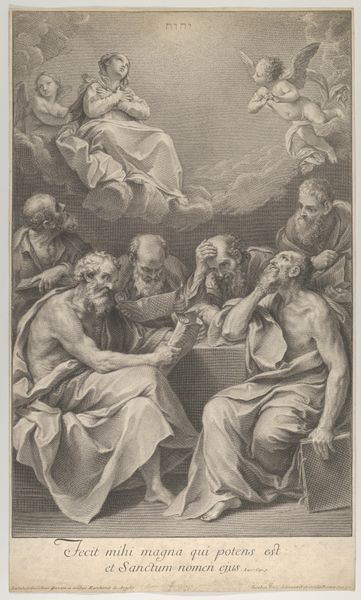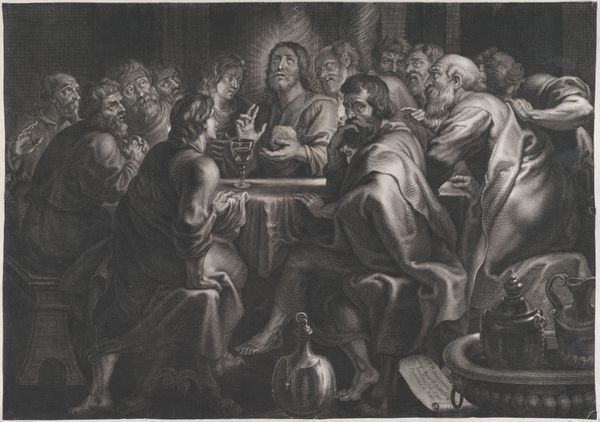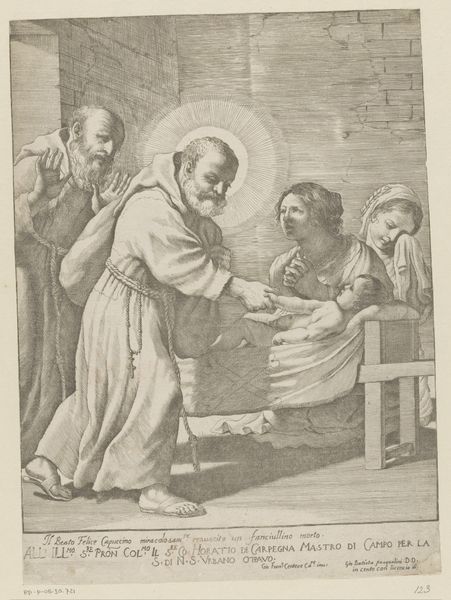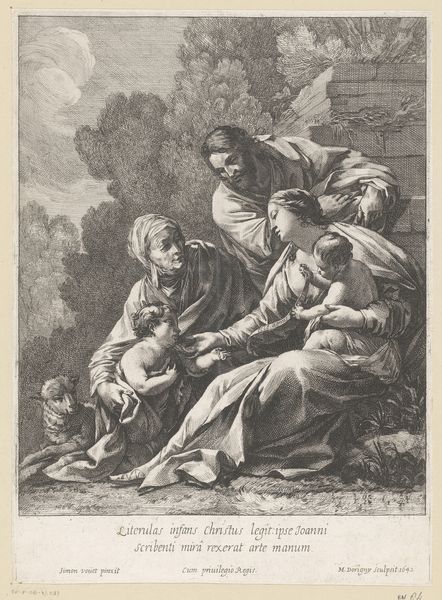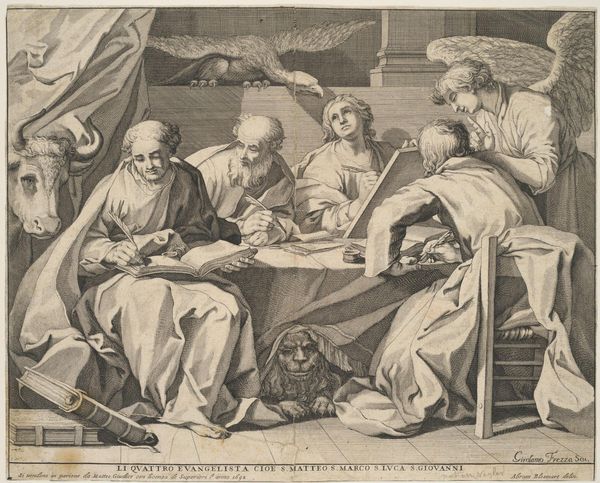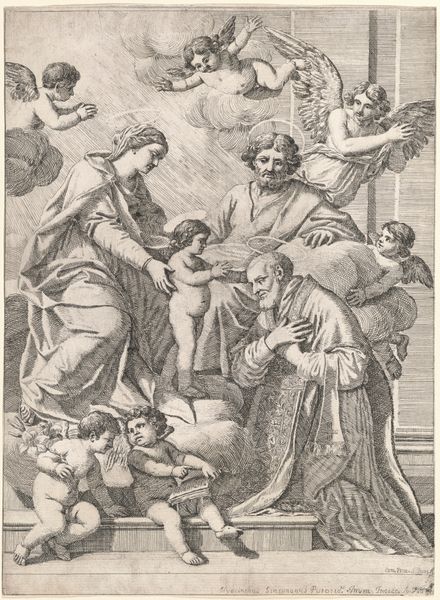
print, engraving
#
narrative-art
#
baroque
# print
#
figuration
#
group-portraits
#
line
#
genre-painting
#
history-painting
#
engraving
Dimensions: height 185 mm, width 245 mm
Copyright: Rijks Museum: Open Domain
Editor: This is "Maaltijd in Emmaüs" or "Meal at Emmaus," an engraving made around 1619 by Giovanni Battista Pasqualini. The black and white image depicts three figures sitting around a table. I’m really drawn to how the artist uses lines to create such a dynamic scene. What catches your eye when you look at this piece? Curator: Indeed. The success of this piece, formally, lies in Pasqualini's manipulation of line and light. Note the dense hatching used to describe the voluminous folds of drapery, contrasting sharply with the comparatively spare treatment of the background. What effect do you think this contrast achieves? Editor: It seems to draw all the attention to the figures themselves, pushing the background into a less important space. It gives it a sense of drama too. Curator: Precisely. Pasqualini guides the viewer's eye strategically. Consider also how the lines articulate form, creating a sense of depth and texture within a two-dimensional plane. The intensity of light emanating from one figure is remarkable, given the limitations of the engraving medium. The use of line suggests a semiotic understanding of light. The very shapes almost crackle with light and life. Don't you agree? Editor: Yes, it really does give an otherworldly feeling! Curator: Observe the composition itself – the strategic arrangement of figures, the geometric structure created by the table. These compositional elements contribute to the work’s visual harmony. Also, it is worth analyzing Pasqualini's formal choice of a printmaking, compared to other mediums. Editor: It’s interesting how focusing on the artistic techniques brings out so much more meaning in this print. I really learned a lot about how the choices made impacted the composition. Curator: And I appreciate the fresh perspective offered by your interpretation, reinforcing the enduring relevance of formalism in appreciating art.
Comments
No comments
Be the first to comment and join the conversation on the ultimate creative platform.
